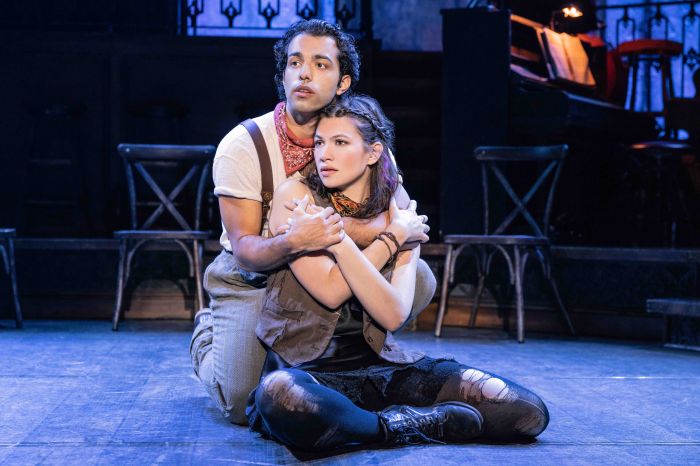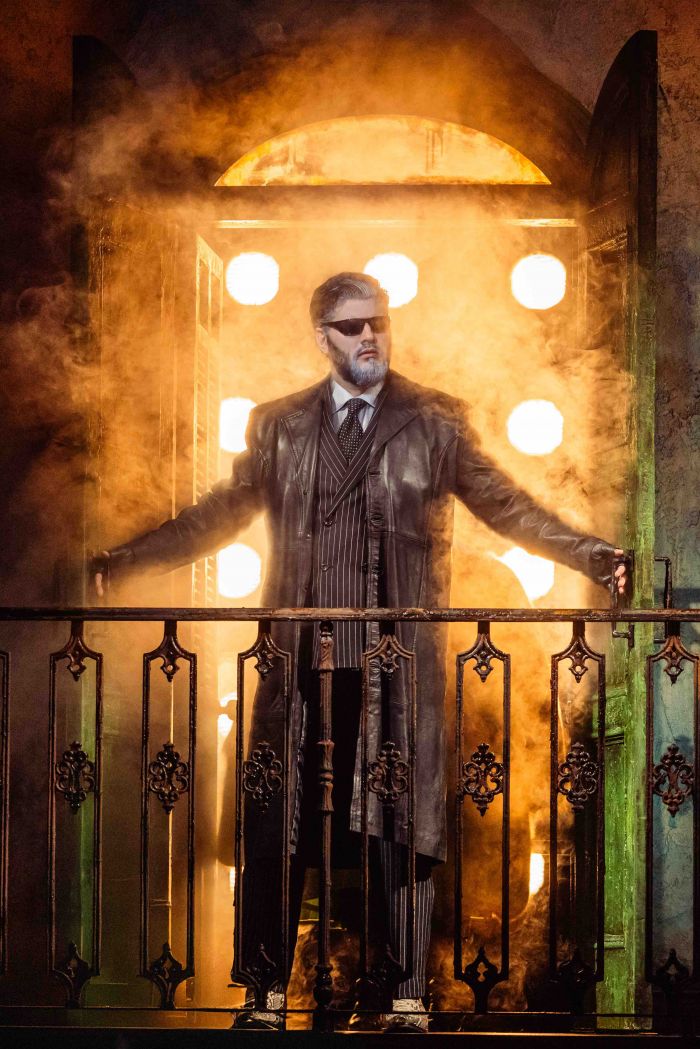
Hadestown, now playing at the Pantages, layers two intertwining myths. First is the love story of the young poet Orpheus and the singer Eurydice; second the darker reign of Hades and his wife Persephone. The musical remaps that mythic terrain into a kind of industrial jazz underworld, a place where hope and love collide with harsh labor, survival, and power.
The story follows Orpheus (Jose Contreras), a poor musician and dreamer, working on his song of spring to bring fairer weather and heal the world. He falls in love with Eurydice (Megan Coltan), a pragmatic, poor woman struggling to survive.

Hades (Nickolaus Colon), God of the underworld and king of Hadestown, a moody industrial city below the earth, is married to Persephone (Namisa Mdlalose Bezana), goddess of spring. Persephone spends half her time above the ground bringing the sun and life to the world and half the time below in Hadestown. Hades has tried to keep her below longer each year, and the world above suffers for the lack of warmth and life.
Eurydice, struggling with hunger, is approached by Hades, who tempts her with the promise of safety and shelter in Hadestown. She accepts the offer and signs her soul away. Orpheus discovers she has left and vows to bring her back, although Hermes (Jaylon Crump) warns him not to go, through the power of his song. Act 1 ends with Orpheus descending into the underworld, singing “Wait for Me” as he enters the road to Hadestown.

Act II opens with a view of Hadestown, a mechanized factory run by Hades. Eurydice realizes too late that she is not in a paradise but enslaved in a system of endless labor. Orpheus enters Hadestown and Hades agrees to hear his song, which reminds Hades of his early love for Persephone. Persephone persuades him to release Eurydice under the condition that Orpheus must not look back to see if she is following him out of Hadestown. The test mirrors the myth’s question of love and doubt. As daylight appears, Orpheus loses faith and looks back, and Eurydice vanishes forever. The musical intertwines themes of love and fear and capitalism, and power.
The score by Anaïs Mitchell is a mix of folk, blues, and jazz. Key songs like “Road to Hell,” “If It’s True,” “Wait for Me,” “Why We Build the Wall,” and “Chant (Reprise)” resonate with both power and poignancy.

Visually, the production settles the myth into a world that feels part vintage industrial, part jazz-club, part mythic underworld. The set uses scaffolding, metal steps, lanterns, and atmospheric lighting that shift between the surface and Hadestown. The costumes match this hybrid with the surface in earthy folk fashion and spring colors; Hadestown is darker and slicker with leather and muted tones, giving an industrial chic vibe.
This production of Hadestown at the Pantages honors the lyricism and heart of the original while offering fresh energy through its cast. The principal performances stand out, the storytelling remains coherent and affecting, and the design immerses you in the myth-mechanism without overshadowing the human relationships.
Hadestown is playing at the Pantages Theatre in Hollywood Tuesday – Thursday at 7:30 pm, Friday at 8 pm, Saturday at 2 and 8 pm, and Sunday at 1 and 6:30 pm. Tickets at www.broadwayinhollywood.com.









